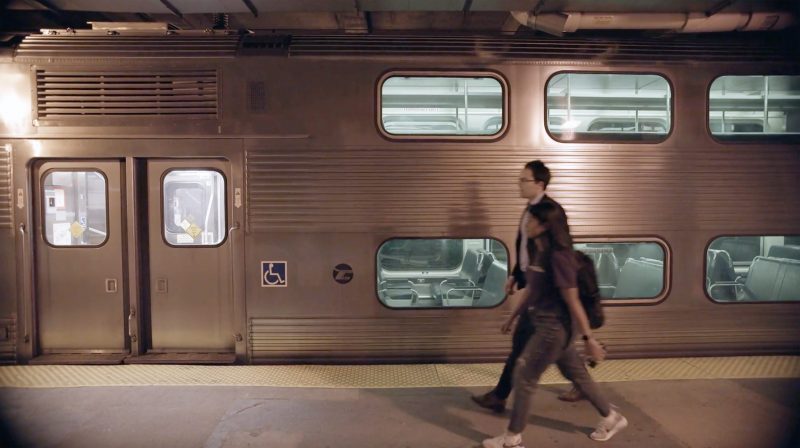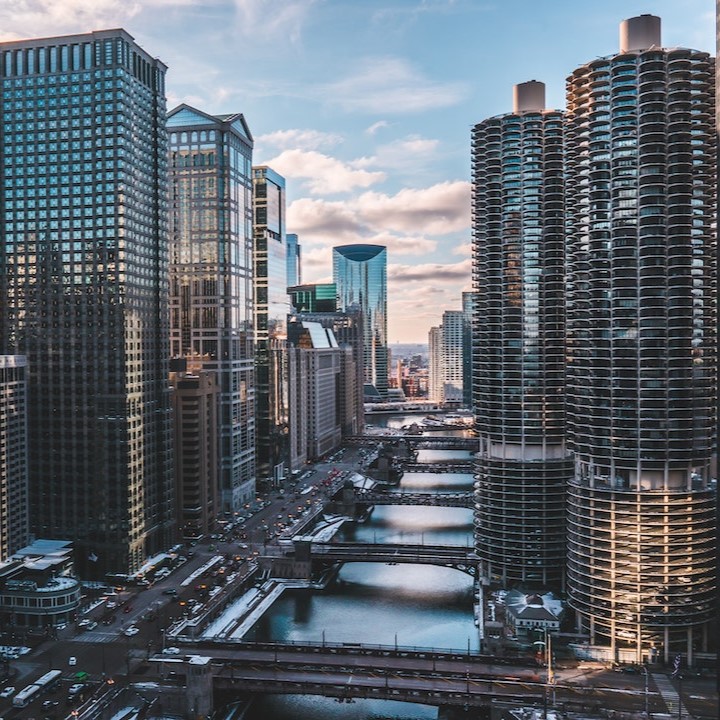This video from Northwestern University shows how underground climate change can affect the infrastructure within cities.
Underground climate change
Scientists already knew that cities are heat islands. Cities absorb, hold and release heat differently than in rural areas. And it’s been shown that, in many parts of the United States, steadily increasing warming trends are already intensifying urban heat islands. But cities – with their myriad underground structures such as subways and parking garages – don’t just release heat into the air. They also constantly release heat into the ground. Now, for the first time, scientists have linked this underground climate change to the shifting of ground below urban areas.
A July 11, 2023, statement from scientists at Northwestern University, in Chicago, explained:
As the ground heats up, it also deforms. This phenomenon causes building foundations and the surrounding ground to move excessively (due to expansions and contractions) and even crack, which ultimately affects structures’ long-term operational performance and durability. Researchers … expect these issues to continue for years to come.
Alessandro Rotta Loria of Northwestern University in Chicago is author of the new study, which is based on data gathered by sensors placed in the basements of buildings, subway tunnels, underground parking garages and subsurface streets like Chicago’s Lower Wacker Drive. Rotta Loria said:
Underground climate change is a silent hazard … no existing civil structure or infrastructure is designed to withstand these [deformations of the ground].
Although this phenomenon is not dangerous for people’s safety necessarily, it will affect the normal day-to-day operations of foundation systems and civil infrastructure at large.
…Many foundations downtown are undergoing unwanted settlement, slowly but continuously. In other words, you don’t need to live in Venice to live in a city that is sinking … even if the causes for such phenomena are completely different.
The journal Nature Communications Engineering published Rotta Loria’s peer-reviewed study on July 11, 2023.
Studying the underground heat
Previous studies have shown that the ground just beneath cities warms by 0.1 to 2.5 degrees Celsius (0.2 to 4.5 F) per decade. But this new study is the first to link underground climate change to the shifting ground beneath cities. Previous research focused on ecological and health issues.
Rotta Loria said:
If you think about basements, parking garages, tunnels and trains, all of these facilities continuously emit heat. In general, cities are warmer than rural areas because construction materials periodically trap heat derived from human activity and solar radiation and then release it into the atmosphere.
That process has been studied for decades. Now, we are looking at its subsurface counterpart, which is mostly driven by anthropogenic activity.

Chicago as a laboratory
Chicago is a convenient real-world laboratory for Rotta Loria’s research at Northwestern University. With help from students in his lab, Rotta Loria installed more than 150 wireless temperature sensors across the Chicago Loop (the city’s downtown). They put the thermometers underground in subways, basements, and even buried at Grant Park. They also put sensors above ground in the Loop.
What they found was that underground temperatures beneath the Loop are often 10 C (45 F) warmer than temperatures beneath Grant Park. Plus, air temperatures in underground spaces can be up to 25 C (45 F) higher compared to the undisturbed ground temperature. Rotta Loria said:
We used Chicago as a living laboratory, but underground climate change is common to nearly all dense urban areas worldwide. And all urban areas suffering from underground climate change are prone to have problems with infrastructure.

Modeling the changing ground
Using three years of temperature data and computer modeling, Rotta Loria simulated changing ground temperatures from 1951 to 2051. Depending on the composition of the ground (from soft clay to limestone), some areas would shrink while others would swell. The press release said:
According to the simulations, warmer temperatures can cause the ground to swell and expand upward by as much as 12 millimeters [0.47 inches]. They also can cause the ground to contract and sink downward – beneath the weight of a building – by as much as 8 millimeters [0.31 inches]. Although this seems subtle and is imperceptible to humans, the variation is more than many building components and foundation systems can handle without compromising their operational requirements.
Rotta Loria added:
Based on our computer simulations, we have shown that ground deformations can be so severe that they lead to problems for the performance of civil infrastructure. It’s not like a building will suddenly collapse. Things are sinking very slowly. The consequences for serviceability of structures and infrastructures can be very bad, but it takes a long time to see them. It’s very likely that underground climate change has already caused cracks and excessive foundation settlements that we didn’t associate with this phenomenon because we weren’t aware of it.
Older cities worse off than newer
While cities of today were not designed for underground climate change, the situation is worse the older the city. Rotta Loria said:
In the United States, the buildings are all relatively new. European cities with very old buildings will be more susceptible to subsurface climate change. Buildings made of stone and bricks that resort to past design and construction practices are generally in a very delicate equilibrium with the perturbations associated with the current operations of cities. The thermal perturbations linked to subsurface heat islands can have detrimental impacts for such constructions.
A positive to come from underground climate change
It might not all be bad news. Rotta Loria said that perhaps cities could harvest their underground heat with new geothermal technologies. And, proactively, planners could use thermal insulation to keep some of the heat from entering the ground below cities. Rotta Loria said:
The most effective and rational approach is to isolate underground structures in a way that the amount of wasted heat is minimal. If this cannot be done, then geothermal technologies offer the opportunity to efficiently absorb and reuse heat in buildings. What we don’t want is to use technologies to actively cool underground structures because that uses energy. Currently, there are a myriad of solutions that can be implemented.
Bottom line: Scientists say that the heat structures emit beneath cities leads to underground climate change, which can cause the ground to swell and shrink. While it’s a hazard to buildings, it could also be a source of thermal energy.
Source: The silent impact of underground climate change on civil infrastructure











